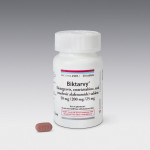People on a regimen containing either once or twice daily Viramune (nevirapine) were as able as people on a Norvir (ritonavir)–boosted Reyataz (atazanavir) regimen to get their virus below 50 copies. The data from the ARTEN study were presented on Monday, July 20, at the Fifth International AIDS Society (IAS) Conference on HIV Pathogenesis, Treatment and Prevention in Cape Town.
The study’s primary author, Vicente Soriano, MD, from the Hospital Carlos III, in Madrid, explained that 569 people with HIV starting antiretroviral (ARV) treatment for the first time were randomized to receive a regimen containing either 200 mg of Viramune twice-daily, 400 mg of Viramune once-daily, or 300 mg of Reyataz and 100 mg of Norvir once-daily.
Soriano’s team reported that 48 weeks after starting treatment, 66.8 percent of the people receiving Viramune and 65.3 percent of people receiving Reyataz had a viral load of less than 50 copies. In the analysis, however, the researchers combined the data from both Viramune arms. Thus it is not possible to determine whether both Viramune arms were equally effective.
The Viramune and Reyataz arms were comparable in terms of side effects, though slightly more people taking Viramune had to discontinue treatment than people taking Reyataz—mostly due to rash. People taking Viramune had somewhat higher elevations in total cholesterol, LDL (the “bad” cholesterol) and HDL (the “good” cholesterol). People taking Reyataz had significantly greater triglyceride elevations compared with people taking Viramune.
The authors conclude that Viramune is an effective first-time treatment option, provided that people follow the recommended guidelines: Women with more than 250 CD4s and men with more than 400 CD4s should not start Viramune.
Advertisement
Advertisement
Advertisement






Comments
Comments